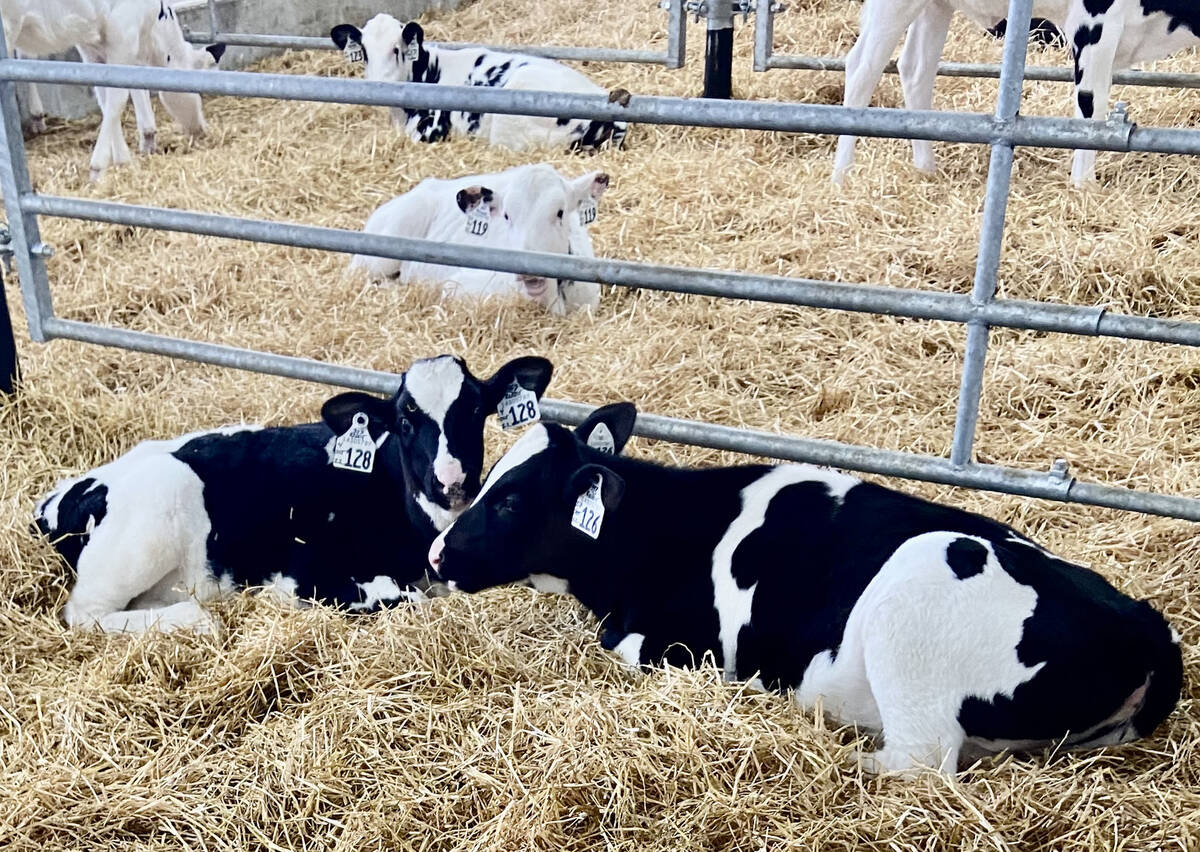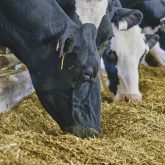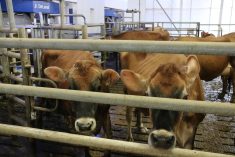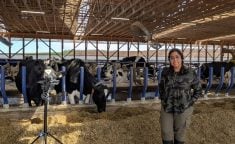Situated on a well-travelled road, Hoenhorst Farms frequently has members of the public drive in the laneway wondering if they can take a look around.
On June 14, there was no wondering necessary. The Innerkip-area farm threw open its doors to welcome scores of visitors as host of Farm and Food Care Ontario’s annual Breakfast on the Farm event. The event provides a behind-the-scenes look for visitors to see how food is grown and raised in Ontario.
Why it matters: An enthusiastic and people-loving host farm is crucial to allow Breakfast on the Farm’s organizers and army of volunteers to successfully pull off the event.
Read Also

Back to the drawing board for sexed semen fertility ratings
Lactanet, the national genetic evaluation and dairy data provider, goes back to the drawing board with its sexed semen fertility rating index prototype.
Hoenhorst Farms’ Cox Wensink provided Farmtario with a tour the day before the big crowds arrived. She conceded the farm does typically turn away unsolicited requests from the public for one-on-one tours. But she was thrilled at the opportunity to join with Farm and Food Care Ontario to ensure anyone interested in experiencing the 500-cow dairy farm could do so.
“It’s so important that farmers do this kind of thing,” said the fourth-generation owner of Hoenhorst, which raises all its own replacements and handles the milking herd on two separate sites using a total of 10 Lely A4 milking robots.
“People are curious about what happens on farms and how their food is made. And if we don’t tell them and show them, they’re going to get the information somewhere else. And that information isn’t always right.”
Wensink’s parents came to Oxford County in 1994 from the Netherlands, starting the North American incarnation of their dairy with 63 cows. The original barn is now the maternity area, first constructed on the old milking parlour’s footprint but tripled in size in 2018 due to the growing herd size.
They now have eight robots on the home farm milking about 380 cows and another two on a farm around the corner milking about 120.
Wensink took over the farm in 2021.
“There have been quite a few changes over the years.”
With heifers and first-lactation cows typically bred to sexed semen and much of the rest of the herd to beef, they’re currently calving out around 60 per cent beef and about 40 per cent Holstein heifers. Those youngest calves are housed in moveable calf crates up to 10 days old, then moved to all-in all-out housing groups through weaning and up to breeding age.
“We focus on our dairy genetics. We like to pride ourselves on raising happy, healthy cows,” said Wensink.
For fieldwork, they do the cutting of some forage crops but custom operators do the rest. “Having all those other (cropping) parts of the farm operation became too logistically challenging,” she said.
They have nine employees, including eight from Honduras who come to Canada through the federal government’s Temporary Foreign Worker Program. Wensink runs the farm in both English and Spanish.
The longest-tenured employee has been with Hoenhorst Farms for over a decade.
For Breakfast on the Farm, small groups entered the milk house where the farm’s regular milk truck driver explained the pickup procedure to them. People could then walk through the maternity barn (some were even lucky enough to see a cow calve), and see a Holstein and Angus calf up close.
From there, they could walk to the calf/heifer barns and then the main milking barn.
“One thing that people often seem to be surprised about is how quiet it is,” Wensink noted as she observed the milking herd laying in stalls bedded with a mixture of sawdust, cardboard and lime.
A highlight on June 14 was full access for visitors to the robotic milking room, where volunteers at each of the eight units explained the process to the throng of families attending the event.
Outside and in the passageways, farm organizations, agribusinesses and service providers showcased display booths, machinery and even live animals including goats, sheep and water buffalo.
Wensink was impressed by the number and variety of farm-sector service providers who get involved with Breakfast on the Farm as well as the innovative technologies on display.
Hoenhorst recently completed a new bunker silo that hasn’t yet been used. Its initiation came during Breakfast on the Farm as overflow parking for the approximately 120 volunteers on site for the event, which was open to the public from 9 a.m. to 1 p.m. The public, meanwhile, was asked to park at a church in Innerkip and hop on shuttle buses to get to the farm.
Wensink says it became evident through the organizational process that Farm and Food Care “is very good at what they do.”
She first learned about the Breakfast on the Farm opportunity only after she began researching options for celebrating the 100th anniversary of her family’s farm, which originated in the Netherlands. She realized that she needed the help of an event planner, which eventually led her to speaking with the team at FFCO.
She came up with the idea of piggybacking the centennial celebration on Breakfast on the Farm. But first Hoenhorst Farms had to apply to serve as 2025 host.
“It was really a two-way process,” she said, during which she aimed to make sure the Farm and Food Care people would work well on her farm and they interviewed her to see if her family’s operation would be a suitable site.
Wensink researched other farms which had hosted Breakfast on the Farm in the past and contacted some of them. “It was so interesting,” she recalled. She thought perhaps their perspectives would differ depending on what commodities they produce or where they’re located in the province but that wasn’t the case.
“They didn’t know that I had been talking to the other farms but they all had almost the identical response,” she said. “They would all do it again.”
After meeting the Farm and Food Care representatives, she said, “for me, that was an easy decision.”
After Hoenhorst was confirmed as the 2025 host, Wensink was given the responsibility of nominating people from her farm or who work with her farm to serve on the organizing committee.
On the Thursday prior to Breakfast on the Farm, the farm’s centennial celebration was held. The event tent remained in place for the annual Breakfast on the Farm event two days later.
“I really hope the people who come will recognize that we really care for our animals and how proud we are of being able to produce food for the public,” she said.













